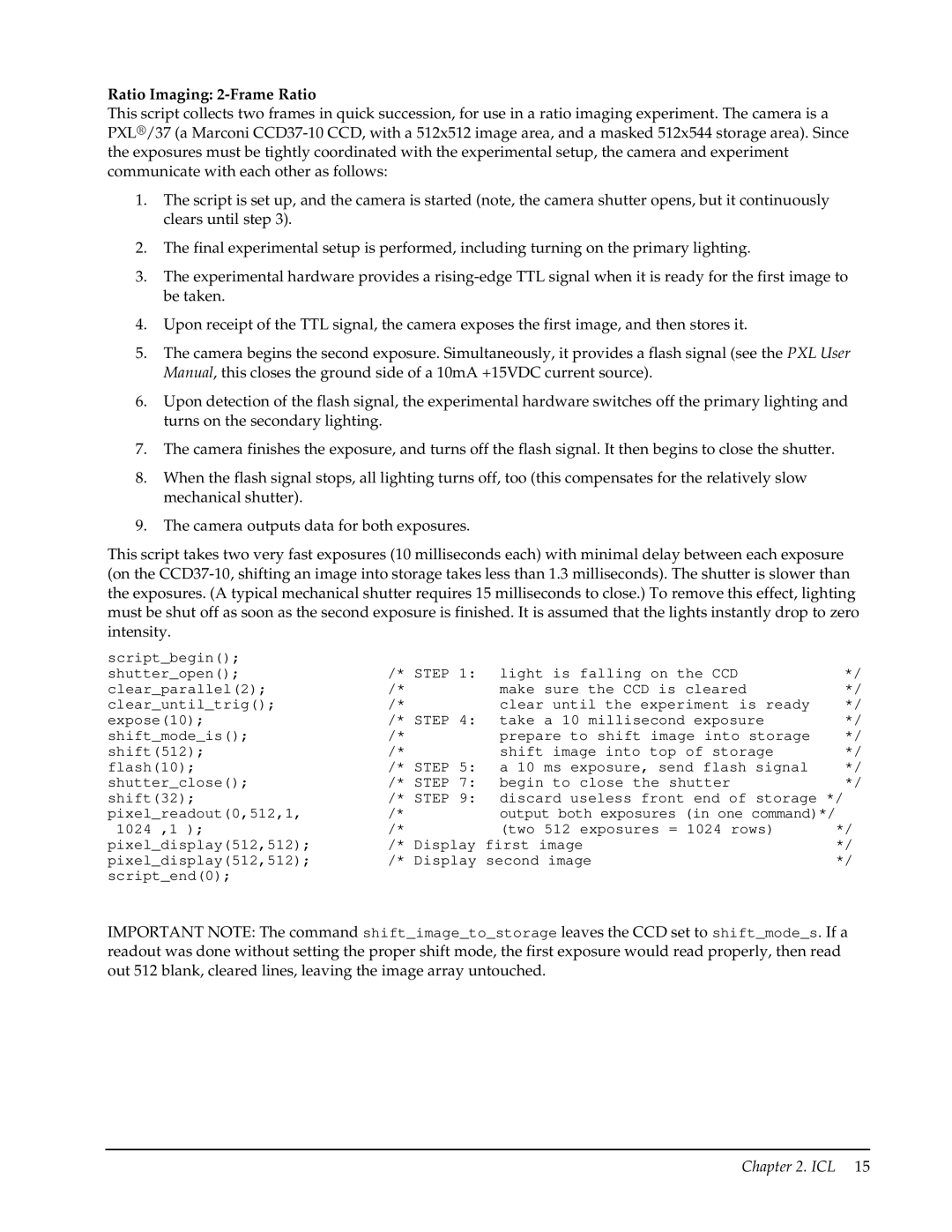Ratio Imaging: 2-Frame Ratio
This script collects two frames in quick succession, for use in a ratio imaging experiment. The camera is a PXL®/37 (a Marconi
1.The script is set up, and the camera is started (note, the camera shutter opens, but it continuously clears until step 3).
2.The final experimental setup is performed, including turning on the primary lighting.
3.The experimental hardware provides a
4.Upon receipt of the TTL signal, the camera exposes the first image, and then stores it.
5.The camera begins the second exposure. Simultaneously, it provides a flash signal (see the PXL User Manual, this closes the ground side of a 10mA +15VDC current source).
6.Upon detection of the flash signal, the experimental hardware switches off the primary lighting and turns on the secondary lighting.
7.The camera finishes the exposure, and turns off the flash signal. It then begins to close the shutter.
8.When the flash signal stops, all lighting turns off, too (this compensates for the relatively slow mechanical shutter).
9.The camera outputs data for both exposures.
This script takes two very fast exposures (10 milliseconds each) with minimal delay between each exposure (on the
script_begin(); |
|
|
|
shutter_open(); | /* STEP 1: | light is falling on the CCD | */ |
clear_parallel(2); | /* | make sure the CCD is cleared | */ |
clear_until_trig(); | /* | clear until the experiment is ready | */ |
expose(10); | /* STEP 4: | take a 10 millisecond exposure | */ |
shift_mode_is(); | /* | prepare to shift image into storage | */ |
shift(512); | /* | shift image into top of storage | */ |
flash(10); | /* STEP 5: | a 10 ms exposure, send flash signal | */ |
shutter_close(); | /* STEP 7: | begin to close the shutter | */ |
shift(32); | /* STEP 9: | discard useless front end of storage */ | |
pixel_readout(0,512,1, | /* | output both exposures (in one command)*/ | |
1024 ,1 ); | /* | (two 512 exposures = 1024 rows) | */ |
pixel_display(512,512); | /* Display first image | */ | |
pixel_display(512,512); | /* Display second image | */ | |
script_end(0); |
|
|
|
IMPORTANT NOTE: The command shift_image_to_storage leaves the CCD set to shift_mode_s. If a readout was done without setting the proper shift mode, the first exposure would read properly, then read out 512 blank, cleared lines, leaving the image array untouched.
